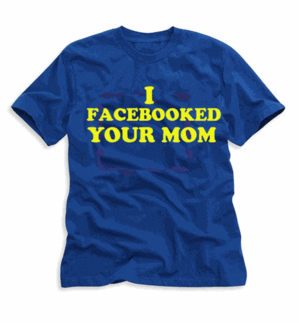- Social Networking Services – Part I: A Brief History
- Social Networking Services – Part II: Usage
From the Oscar-winning movie “The Social Network” to the recent introduction of Google Plus, no-one can deny it: on-line social networking services are here to stay. But, where did they come from and what does it mean for you and me?
Usage
Now that you’re up to date on the history of social networking services, you must be wondering: should I use these services? And, if so: to what extent? First of all let me tell you that, contrary to what some people believe, I am admittedly skeptical and slow to adopt new technologies. However, I am not someone who throws out the baby with the bathwater either.
My first important advice? Determine which social network is best for you and your content, or use multiple ones for different purposes. For example use Twitter to post your public real-time content, Facebook for your personal stuff, LinkedIn for professional things and perhaps Google Plus for all of these using circles. Once you have made a choice, try not to fall for the trap of using everything the service has to offer, but rather: make the service work for you. Don’t want to post any pictures or be tagged? Disable the functionality. Don’t want people to post stuff on your wall? Disable the wall.
Scorn
Unfortunately, I’ve noticed that many people scorn social networking services nowadays for the wrong reasons. I can see how a corny tag line like “this services helps you connect and share with the people in your life” can raise some red flags. However, it is important to realise that a social network is no different from a service like e-mail or telephony: they are primarily a means of keeping in touch with the people you know. These services are not intended to replace direct social contact, but rather: to augment it. My general observation is that people that are active on social networking services are also socially active outside of them. Nevertheless, I do agree that because these technologies enable people to become more globally connected, they open up the choice to become more locally disconnected. However, this is everyone’s personal decision, and not inherent to the technology.
Social networking services can certainly add value beyond conveniently interacting with your best friends and family. They make it possible to keep in touch with people you’d normally lose track of. Apparently seeing an aggregated news feed of what your friends are doing works better for this then sending private e-mails back and forth. Although, I rarely add people on any social service unless I’ve actually met and talked with them, these networks open up the possibility of meeting someone new. This can be via people you are already connected to: the digital equivalent on running into new people at a friend’s party. However, some people also regularly meet complete strangers via Facebook or Twitter. The latter being more naturally geared towards finding unfamiliar people with similar interests, because of it’s public-by-default nature. Realise that meeting a new person via Internet is really as old an application as the Internet itself. I remember meeting many interesting people in my early Internet days via the means that were available back then, some of whom are still friends to this day.
Caveats
The biggest drawback of modern social networking services is not in their usage patterns, but rather the default lack of privacy and security. Many of these networks are extremely permissive “out-of-the-box”. This brings me to my second important advice: depending on your own needs I suggest you change your settings to be as restrictive as possible. Keep tight control over who can see what, unless you really want something to be public. Also consider what you want to post: what exactly is the news value of your breakfast? Keep it short, keep it relevant, maintain a high signal to noise ratio. Failing to do so will result in people ruthlessly clicking away your content. Also consider carefully whether you should really post something, especially if it is public. For example: I still think that posting location information, geotags and check-ins, in real-time is not a wise idea.
Finally, it’s unfortunate that some social networking services make it difficult to get your own data out of their systems again: making a local private copy of the content you created is often cumbersome. Google Plus is certainly a step in the right direction with respect to both privacy controls and data liberation. However, it can’t be denied: all of these services are making money primarily by targeting advertisements based on the content you share and create. Hence, their incentive to keep your data inside. Although the bills have to be paid somehow, not all people are at ease with this. I have to be honest and say that an open social network devoid of advertisements and tracking would be more then welcome. Diaspora is the only large-scale effort in this direction, and even though it has been criticised for being difficult to set-up and insecure, there are also positive reactions.
Conclusion
Social networking services are just one part of on-line social media. There’s more including, but not limited to: blogs, wiki’s, content sharing and collaboration tools. While fifteen years ago people were concerned about the digital divide: an increasing distance between the group of people that were capable of using computers and those who were not, perhaps nowadays we should be concerned about the social media divide: between those who use social media as legitimate enrichment and those who shy away from them.

